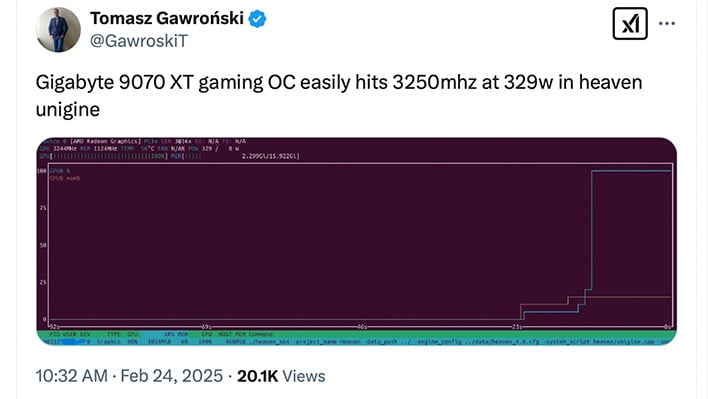Gigabyte Radeon RX 9070 XT Spotted Easily Boosting To 3.25GHz Ahead Of Launch
Interestingly, this means a 329W power draw while in the Unigine Heaven benchmark software. This was also done on Linux, and not the typical Windows gaming environment you'd expect. This is because AMD drivers for RDNA 4 are available for Linux already, before release.
We recently saw the AMD Radeon RX 9070, a non-XT card, with listed Amazon boost clocks of 2,700MHz. The XT variants are expected to boost higher, especially overclocked models such as this Gigabyte RX 9070 XT Gaming OC. Here's the post on X...

AMD was largely mum on details for its new RDNA 4 GPUs at the event, which will carry generational improvements such as FSR 4 with AI frame generation. Some even speculated that the GPU was set to launch already, with AMD eventually confirming the early March launch.
Gamers will have a keen eye on more than just boost clocks for this generation. The price-to-performance will be vital, coupled with the need to have good supply and availability. GeForce RTX 50 series GPUs have had what seems like abysmal supply, making gamers frustrated. Rapidly increasing prices due to the scarcity and tariff uncertainty has also contributed to some of the issues.

